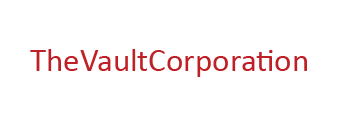Effective email management is important for both personal and professional communication. With an increasing volume of emails, one must find the best approach to handle them effectively in order to enhance productivity, organisation and time management.
The Microsoft 365 Exchange Platform provides safe and reliable solutions for email management in four main forms: shared mailboxes, aliases, plus emailing and email distribution lists. Each of these solutions provide their own unique features and benefits due to each one catering to different needs. By understanding the uses for each solution, we can efficiently manage our emails better and maintain organisation.
Summary
| Feature | Shared Mailbox | Alias | Plus Emailing | Distribution List |
| Access | Multiple users | Single user | Single user | Multiple recipients |
| Inbox | Shared | Forwarded to primary account | Primary account | Individual recipient inboxes |
| Sending Emails | Yes, from the shared mailbox address | No, uses the primary account address | Yes, using primary account address | No, sends to all list members |
| Configuration | Requires setup | Simple setup | No setup needed | Requires admin setup |
| Purpose | Team collaboration, centralized communication | Personal or business organization | Organizing and tracking emails | Group communication |
| Pros | Facilitates teamwork, centralizes communication | Easy to manage, protects primary email | Easy organization, enhances security | Efficient information distribution |
| Cons | Requires proper management, can become cluttered | Cannot send directly from alias | Not accepted everywhere, can be complex | Can overwhelm recipients |
| Use Case | Customer support, sales teams, departments | Personal aliases, small business departments | Organizing emails, tracking sources | Announcements, team updates |
An In-Depth Look into Email Solutions
An Alias is an alternative email address that forwards messages to a primary email account. This allows users to receive emails sent to different addresses in a single inbox without needing a separate inbox for each alias. Aliases are useful for organizing emails based on the alias used, enhancing privacy and security. The main advantage is the consolidation of multiple addresses into one inbox, but the limitation is that aliases cannot send emails directly: they only forward to the primary account. Aliases are ideal for personal use, small businesses, and freelancers managing various communications under one account.
Plus emailing, also known as sub addressing, enables users to create variations of their email address by adding a “+” sign followed by additional text (e.g., user+newsletter@example.com). This method requires no special setup and works with most email providers, making it easy to organize and filter emails automatically. Plus emailing provides enhanced security by allowing the creation of disposable addresses and helps in tracking email origins. However, some websites may not accept email addresses with a “+” sign, and overuse can lead to complex address variations. Plus emailing is particularly useful for organizing emails from different sources, tracking potential spam, and creating temporary addresses for specific events or projects.
A distribution list is an email grouping that forwards messages sent to a single alias to all included addresses, facilitating simultaneous information dissemination to large groups. Key features include group communication, central management by an administrator, and delivery of emails to each member’s personal inbox. It is set up by an admin in email systems like Microsoft Exchange or Google Workspace. Distribution lists efficiently distribute information, enhance team communication, and are easy to manage and update. However, they are not suitable for collaborative email management and can overwhelm recipients with emails. Common use cases include company-wide announcements, team communication, and event updates.
Conclusion
In summary, Each form of mailing has its own strengths and is suited for different scenarios, helping users choose the best option based on their specific needs and use cases. By understanding the distinct purposes and benefits of each email management solution, users can choose the most suitable option to meet their specific requirements, thereby streamlining their communication processes and boosting overall efficiency.
